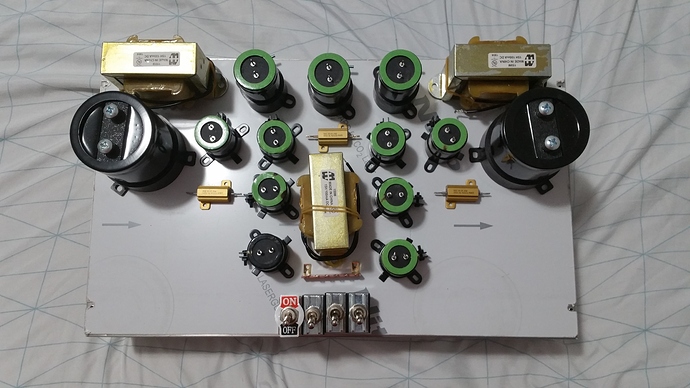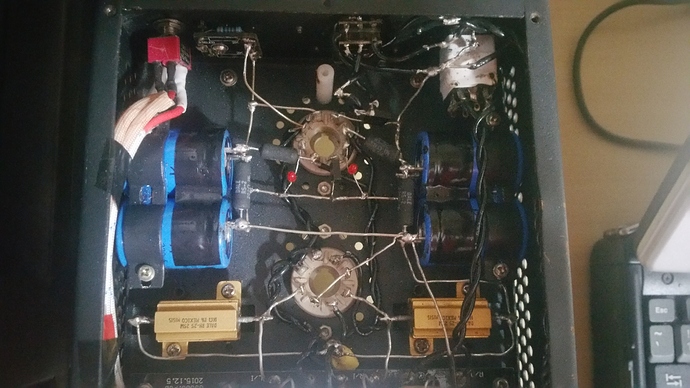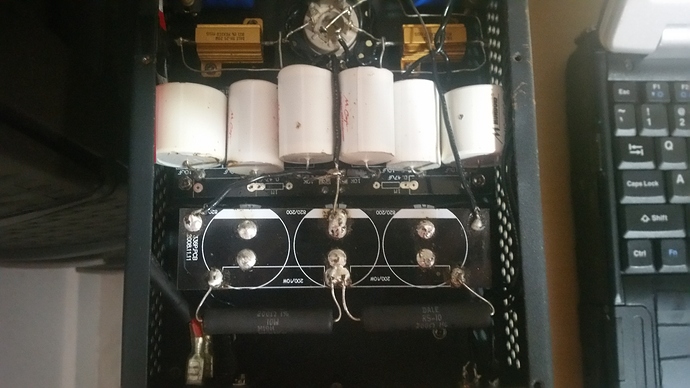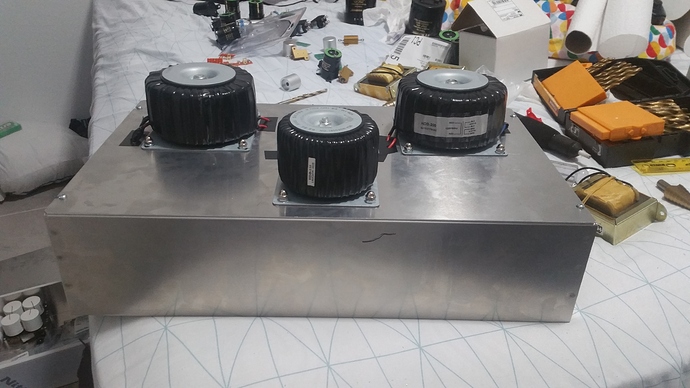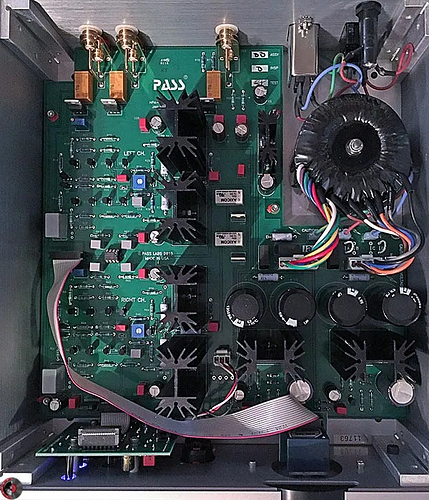Ok, so, gonna start making that amp I was planning for a while, essentially, it’s supposed to replace my Darkvoice 336SE, hopefully it sounds a bit better than the 336SE, idk. So here are some pics of the Power Supply Box (More Stuff Inside) With a possible layout of all the parts:
The Blackened bits was me just getting bored as well as testing certain things, doesn’t affect performance, all parts work perfectly and have no deformations on them, they all have their retained tolerances, and again, work as they should, also, leaving space for some extra capacitors in the Part 2 of this amp.
Again, it’s not what’s on the outside, but what’s on the inside that counts (Albeit the capacitors will be on the outside kinda since I need space for the Transformers/Diodes/Extra Capacitors for Part 2 on the Inside, not their contacts though . . . well when I’m able to open the necessary holes you’ll see what I mean).
Also this box is a separate power supply, the amp bits will be in another identically sized box, just wanted a separate power supply since the chokes and the transformers can put some noise into the actual amp if they’re too close, besides, makes it seem all fancy like having two boxes (Srsly tho, with the size of the capacitors and the other stuff inside the box like the transformers, I NEEDED a separate box for everything to fit.
Also the Chokes will be kept on the outside, with the transformers on the inside, doesn’t matter since the choke’s frames shouldn’t be capable of shocking me, besides It’s unlikely I’ll be touching them while the amp is on, and I’ll probably get a small cover for them eventually, just wanted them to be far away enough from the transformer, while also not being too close to the Amp portion.
Also the chokes don’t seem to pick up any form of external interference, so I guess I just have to keep them away from the transformers and they shouldn’t pick up any noise, I tested their positioning similar to how chokes were tested for the Crack in this post: The Bottlehead Forums.
The 4 Switches in the pic are there to essentially act as a soft start of sorts, let the tubes heat up first on the amp side, then I can apply the high voltage once they seem to be hot and ready, make sure they last a bit longer, other than that, switches are cool.
The On/Off Switch (Goofy looking but I like it), turns on the heaters, the other three switches apply the High Voltage to the different parts of the amp when the tubes are ready.
Oh also for fun, here’s a pic of my Darkvoice on the inside (Is it crude, yes, very much, honestly it’s kinda embarrassing, like my amp is getting their nudes shown, does it work beautifully however, oh yes, yes it does.):
Yeah the tiny enclosure was a pain in the ass to work with, especially since I had to work inside the case (Also it was the first time I ever tried to solder something, soooo, yeah, if you would have seen the first and second attempts you’d wonder how I didn’t burn the house down).
Essentially I’ll be taking a page from Bottlehead’s book and making the actual surface where the circuit is just a single plate, that can be easily removed and easily moved around, without case walls blocking my hands or my iron, makes it easier to work inside, makes it easier to later modify.
It was raining this entire weekend so I couldn’t get started in making the holes in the enclosure or in the plate where the actual circuit is going (wanted to do it outside so I wouldn’t get aluminum shavings in my room from all the drilling) so idk, the pics here are just placement ideas.
I have spring break next week and it shouldn’t rain during that time, so I have all of that time to actually finish it. I have nothing important school wise this week and I aced all of my exams which is also great, gives me more time to plan out positioning and other stuff, other than that, this post is kinda just to open the thread and later just show off what I’m doing, it’s a pretty simple design but everything is beefy, and won’t break easily, besides the parts are pretty good quality, so it shouldn’t be too bad for what I’m planning.
Oh also that white peg in the Darkvoice pic is a remnant when I tested Speedball on it, idk didn’t pan out as I wanted it to, but oh well, it was a learning experience.
